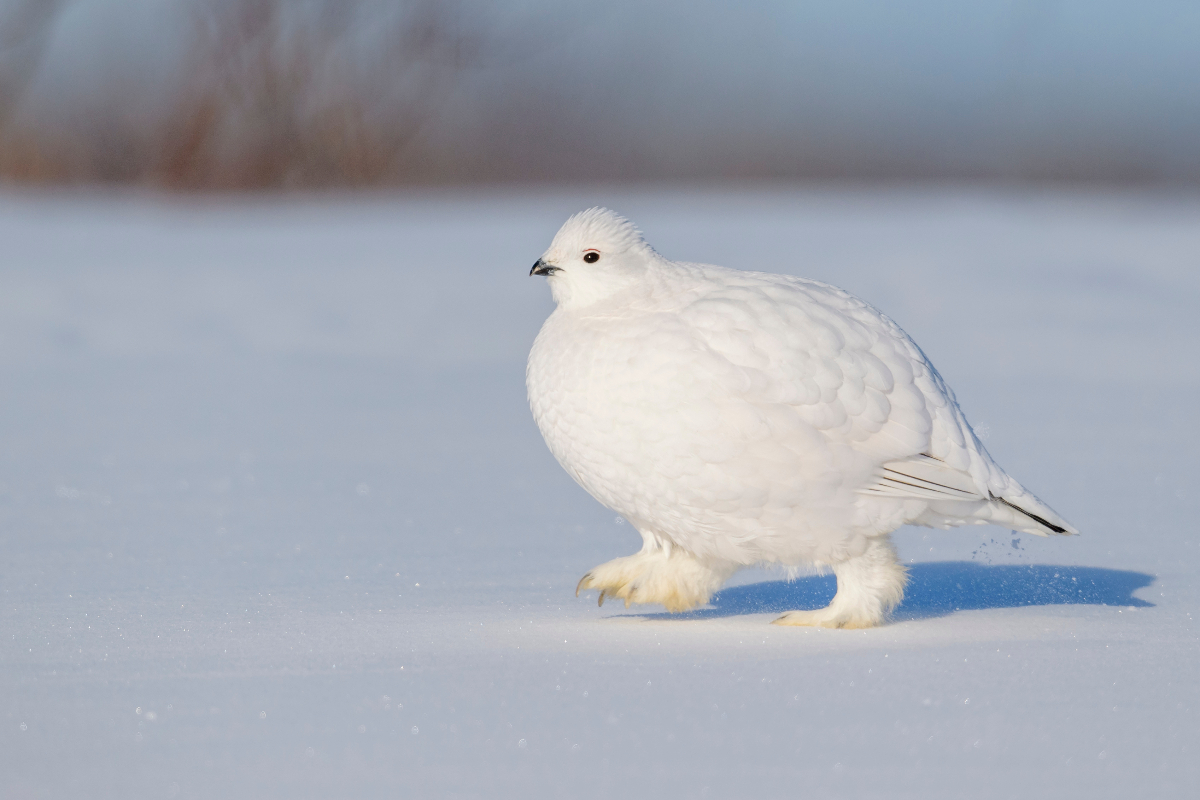Immersed in the sweeping tapestries of the Arctic tundra and the boreal forests, the Willow Grouse, or Lagopus lagopus, articulates a visual and behavioral narrative that is interwoven with the rhythmic cycles of the seasons. This bird, known also as the White Grouse in certain regions, manifests an awe-inspiring adaptive strategy, transmuting its plumage in harmony with the changing environments in which it dwells.

As summer graces the northern landscapes, the Willow Grouse adorns itself in a mottled brown plumage, mimicking the earthy tones of the terrain, thus granting it a stealthy guise amidst the lush vegetation. This inconspicuous attire not only enables it to meld into the tapestry of the land but also offers a subtle shield against the prying eyes of predators.
With the advent of winter, a profound transformation takes place. The Willow Grouse sheds its earthy hues, embracing a stark, white cloak that renders it almost ethereal against the snowy expanses of its winter realm. This snowy attire, while seemingly making it conspicuous, acts as a spectacular camouflage, blurring its silhouette against the icy terrains and protecting it from predators such as foxes and birds of prey.
The capacity of the Willow Grouse to alter its appearance in tandem with the shifting seasons is not merely a visual spectacle but a testament to nature’s ingenious survival strategies. This dynamic change in coloration ensures that the grouse remains inconspicuous throughout the year, aligning its visual identity with the prevailing environmental canvas.
Beneath the constant ebb and flow of its exterior, the Willow Grouse nurtures a robust and resilient spirit, enduring the stark contrasts between the burgeoning life of summer and the stark, frozen solitude of winter. It forages on a varied diet, from buds and leaves in the warmer months to the hardy catkins of willows in the icy grip of winter, demonstrating a versatile and adaptable dietary habit.
As we reflect on the Willow Grouse, or the White Grouse as it’s alternatively named, we are reminded of the inherent adaptability and the nuanced relationships that species forge with their environments. The grouse’s cyclical transformation, a mesmerizing dance with the temporal rhythms of its habitat, invites us to marvel at the myriad ways in which life forms, across the vast tapestry of the Earth, carve out their existence amidst the ever-shifting theatre of life.